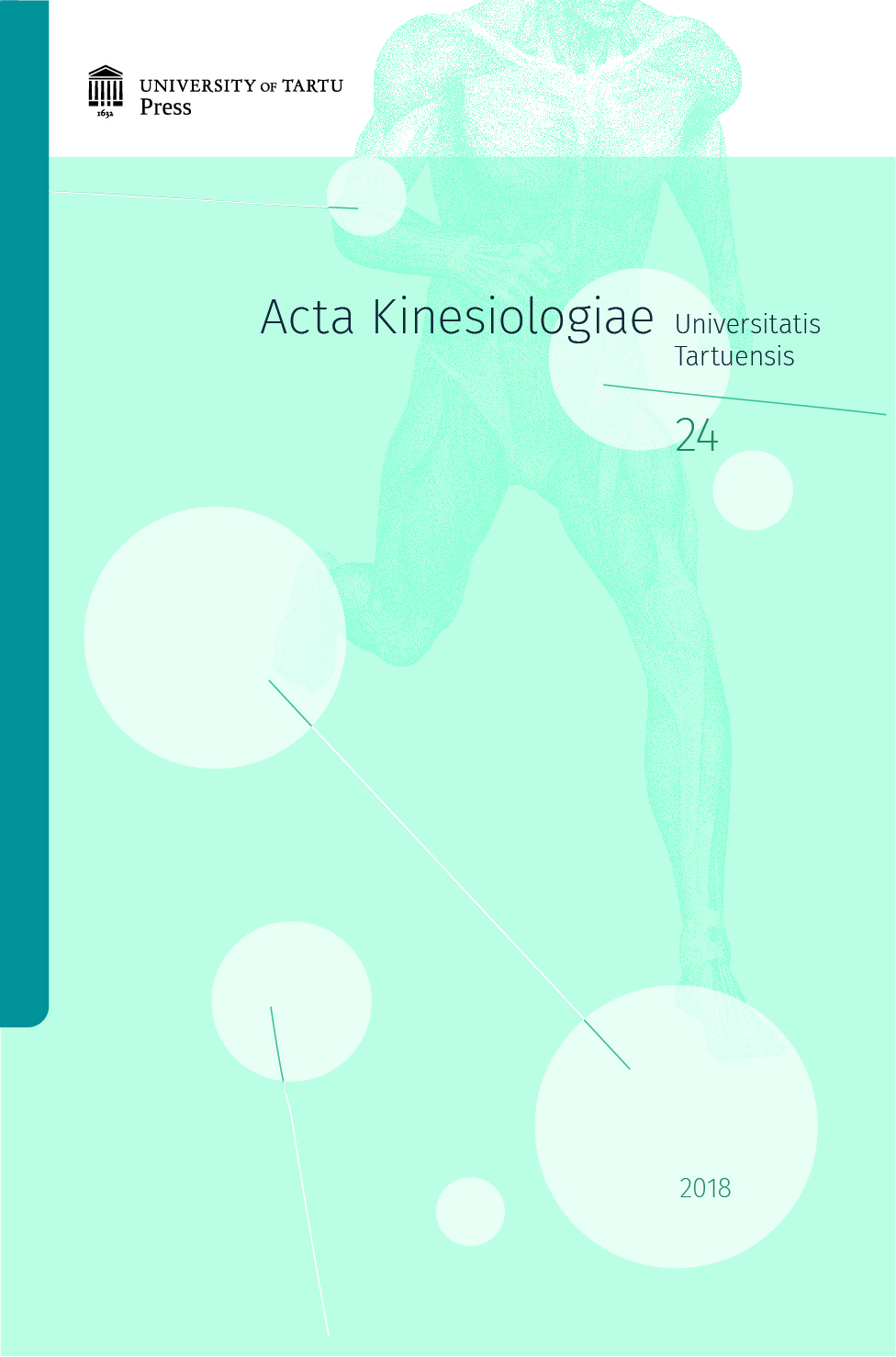Physical fitness in preschoolers according to body composition
DOI:
https://doi.org/10.12697/akut.2018.24.04Keywords:
preschoolers, physical fitness, body composition, body massAbstract
The objective of this study was to investigate physical fitness of preschoolaged children just before entering school according to their body mass index, and to examine possible associations of body mass index, fat mass and fat-free mass with physical fitness in preschool-aged children. Two hundred and fifty-six preschoolers aged 6 to 7 years participated in the study. Physical fitness was assessed using PREFIT test battery and body composition was estimated using four skinfold thickness parameters. Overweight children had lower cardiorespiratory fitness and lower results in all weight-bearing fitness tests, and better handgrip strength test result in comparison with normal-weight children. Significant associations were found between body composition indices and the results of physical fitness tests. Higher BMI associated negatively with weight-bearing physical fitness tests. The results of the research indicate that weight-status and body composition have significant effect on physical fitness in 6–7 years old preschoolers.


